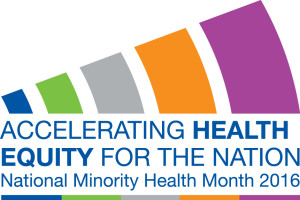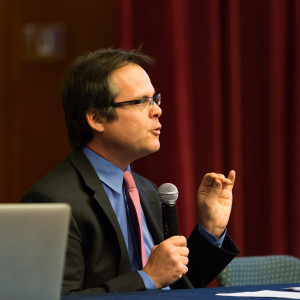
The Office of Minority Health (OMH) was created in 1986. Its formation was a response to a report released by the United States Department of Health and Human Service (HHS) the previous year on black and minority health. Today, it is their mission to develop programs and support policies that will eliminate health disparities.
OMH does this in a number of ways. They are involved in those elements of the Affordable Care Act that further health equity. They are leaders in the implementation of the HHS Action Plan to Reduce Racial and Ethnic Health Disparities. They coordinate both the National Partnership for Action to End Health Disparities and the National Stakeholder Strategy for Achieving Health Equity.
But this month, they’re all about spreading the word about health disparities via National Minority Health Month.
And other organizations are getting in on the action, raising money, educating others about health disparities among minorities, and spotlighting the work they do with minority populations. These events can hopefully provide a blueprint that will enable others to implement similar programs.
For example, OMH is sponsoring a forum in Columbus, Ohio focused on access to care. In Kingston, NY, HealthAlliance Hospital is holding a cultural competence workshop for health care providers who work with immigrant populations. In Oklahoma City, OK, there’s a Hispanic Health Fair. And these are just a handful of the events happening this week alone.
And Planned Parenthood, too, is committed to working within communities to break down barriers many face in accessing health care. Through the various services they provide—such as Promotoras Comunitarias, which utilizes peer-to-peer education to bring health education to Latino families—they work to ensure that all people get the health care they need, regardless of race, income, geography, citizenship status, or gender identity.
How can others work to eliminate health care disparities? Where can you find inspiration? In addition to the HHS’s Action Plan, you can read the CDC’s report on the implementation strategies they themselves have found to be effective. And the Surgeon General once released a document containing suggestions for individuals and families; community organizations; learning centers; businesses; and others.
How can educators in particular help?
For one, there has been research in the past that health education interventions can help, particularly among those populations who are not getting the recommended health care screenings. Providing outreach to community centers in under-served communities can help build awareness of the type of health care services various communities should be requesting for themselves.
And speaking of outreach, organizations such as the American Medical Association have created programs with the intention of increasing the number of minority physicians, which can have the added benefit of providing children in racially and culturally diverse neighborhoods with professional role models.
And as for professional training, health care professionals themselves can benefit from cultural competency programs. Just the other week, we mentioned continuing education for medical professionals for the purpose of serving LGBTQI communities. Providing similar learning opportunities that can be applied to other communities is just as crucial.
To kick start your own search for such programs, begin with the list the American Medical Student Association provides on its website. OMH offers resources as well.
Use this month as an opportunity to learn as much as you can about this particular issue so you can infuse your work with those lessons going forward.



